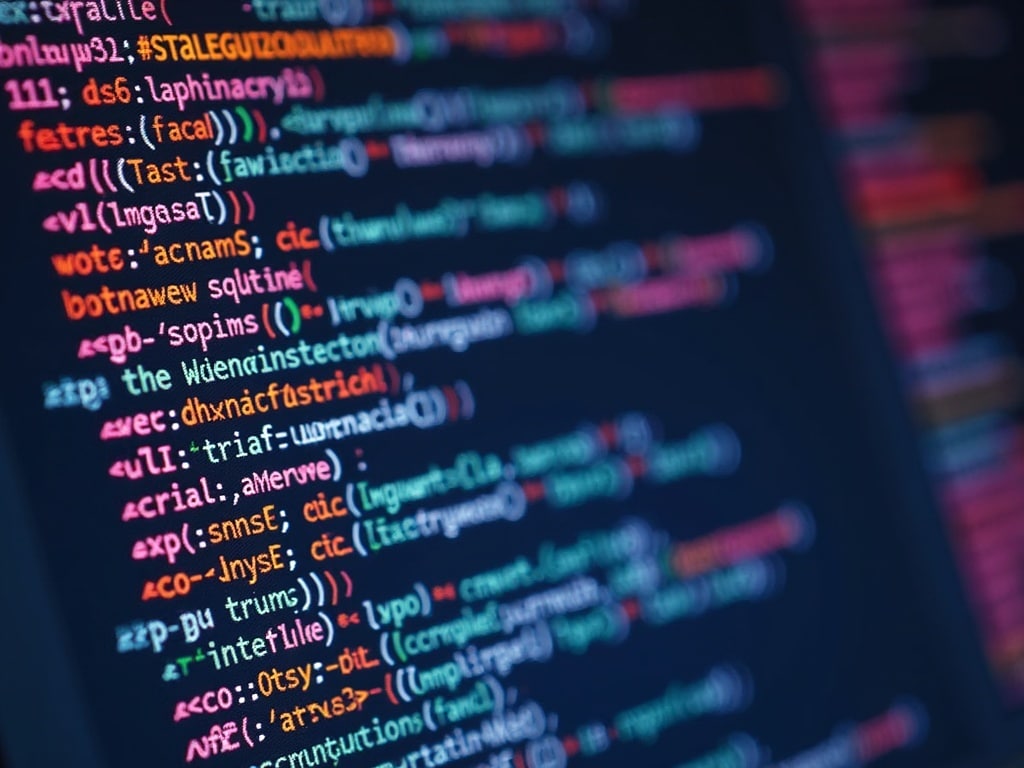Mastering Data Cleaning with Python: A Project-Based Guide
Imagine diving into a treasure chest only to find it filled with tarnished jewels and tangled chains. That’s often what working with raw data feels like. Datasets, in their natural habitat, are rarely pristine. They’re riddled with inconsistencies, missing values, and outright errors. Fear not, aspiring data wranglers! This guide will walk you through a comprehensive data cleaning project using Python, transforming messy data into a polished, insightful asset.
Why Data Cleaning is Crucial
Before we plunge into code, let’s understand why data cleaning is the unsung hero of data science. Simply put, garbage in equals garbage out. Feeding flawed data into even the most sophisticated machine learning model will yield unreliable results. Data cleaning ensures the accuracy, consistency, and completeness of your data, leading to:
- Better Insights: Clean data reveals true patterns and trends.
- Improved Model Performance: Machine learning models trained on clean data are more accurate and reliable.
- Informed Decision-Making: Trustworthy data supports sound strategic decisions.
- Reduced Errors and Costs: Identifying and correcting errors early prevents costly mistakes down the line.
Project Overview: Cleaning a Sales Dataset
For this project, we’ll tackle a simulated sales dataset. This dataset, while hypothetical, mirrors the challenges encountered in real-world scenarios. It might include information like:
- Customer ID
- Product Name
- Purchase Date
- Sales Amount
- Customer Location
Our goal is to cleanse this data, addressing issues such as missing values, incorrect data types, inconsistent formatting, and duplicate entries.
Setting Up Your Python Environment
Before diving in, let’s set up your Python environment. You’ll need the following libraries:
- Pandas: For data manipulation and analysis.
- NumPy: For numerical operations.
- datetime: For working with dates and times.
You can install these libraries using pip:
pip install pandas numpy python-dateutilNow, let’s import the necessary libraries into your Python script:
import pandas as pd
import numpy as np
from dateutil import parser
Loading and Inspecting the Data
First, load your sales data into a Pandas DataFrame. Assuming your data is in a CSV file named sales_data.csv, use the following code:
df = pd.read_csv(sales_data.csv)
Next, perform an initial inspection to understand the data’s structure and identify potential problems. Use the following Pandas functions:
df.head(): Displays the first few rows of the DataFrame.df.info(): Provides information about the DataFrame’s structure, data types, and missing values.df.describe(): Generates descriptive statistics for numerical columns.df.isnull().sum(): Counts the number of missing values in each column.
By running these commands, you’ll gain a comprehensive overview of your data’s condition. Look for inconsistencies, unexpected data types, and columns with a high percentage of missing values.
Handling Missing Values
Missing values are a common headache in data cleaning. Several strategies can address them:
- Deletion: Removing rows or columns with missing values. Use this cautiously, as it can lead to data loss.
- Imputation: Filling in missing values with estimated values. Common methods include:
- Mean/Median Imputation: Replacing missing values with the mean or median of the column.
- Mode Imputation: Replacing missing values with the most frequent value in the column.
- Forward/Backward Fill: Using the previous or next valid value to fill in the missing value.
- Interpolation: Estimating missing values based on the values of neighboring data points.
The best approach depends on the nature of the data and the extent of the missing values.
Example: Imputing Missing Sales Amounts with the Mean
Let’s say the Sales Amount column has missing values. You can impute them with the mean sales amount:
mean_sales = df[Sales Amount].mean()
df[Sales Amount].fillna(mean_sales, inplace=True)
Example: Dropping Rows with Missing Customer IDs
If Customer ID is crucial and rows with missing IDs are unusable, you can drop them:
df.dropna(subset=[Customer ID], inplace=True)
Correcting Data Types
Incorrect data types can lead to errors and prevent proper analysis. For instance, a Purchase Date column might be stored as a string instead of a datetime object. Use the astype() function to convert columns to the correct data types.
Example: Converting Purchase Date to Datetime
df[Purchase Date] = pd.to_datetime(df[Purchase Date], errors='coerce')
The `errors=’coerce’` argument handles cases where the date format is invalid, converting them to `NaT` (Not a Time), which can then be handled as missing values.
Example: Converting Customer ID to String
Sometimes Numeric IDs are better represented as strings
df[Customer ID] = df[Customer ID].astype(str)
Standardizing Text and Categorical Data
Inconsistent formatting in text and categorical columns can hinder analysis. For example, USA, United States, and US should ideally be standardized to a single representation.
- String Manipulation: Use string functions like
.str.lower(),.str.upper(),.str.strip(), and.str.replace()to standardize text. - Mapping: Create a dictionary to map inconsistent values to a standard representation.
Example: Standardizing State Abbreviations
Let’s say your Customer Location column contains inconsistent state abbreviations. You can use a mapping dictionary to standardize them:
state_mapping = {
CA: California,
Calif: California,
NY: New York,
N.Y.: New York,
# Add more mappings as needed
}
df[Customer Location] = df[Customer Location].replace(state_mapping)

Removing Duplicate Entries
Duplicate entries can skew analysis and lead to inaccurate results. Use the duplicated() and drop_duplicates() functions to identify and remove duplicates.
#Identify duplicate rows
duplicates = df[df.duplicated()]
print(Duplicate Rows :)
print(duplicates)
# Remove duplicate rows
df.drop_duplicates(inplace=True)
Carefully consider which columns define a duplicate. For example, you might consider two entries with the same Customer ID, Product Name, and Purchase Date as duplicates.
Handling Outliers
Outliers are extreme values that deviate significantly from the rest of the data. They can distort statistical analyses and model performance. Various techniques can address outliers:
- Visual Inspection: Use box plots or scatter plots to identify potential outliers.
- Z-Score: Calculate the Z-score for each data point and remove values that fall beyond a certain threshold (e.g., Z-score > 3 or < -3).
- IQR (Interquartile Range): Identify outliers as values that fall below Q1 – 1.5 IQR or above Q3 + 1.5 IQR.
- Winsorizing: Replace extreme values with less extreme values (e.g., the 5th and 95th percentiles).
Example: Removing Outliers Using the IQR Method
Let’s say you want to remove outliers from the Sales Amount column using the IQR method:
Q1 = df[Sales Amount].quantile(0.25)
Q3 = df[Sales Amount].quantile(0.75)
IQR = Q3 - Q1
lower_bound = Q1 - 1.5 IQR
upper_bound = Q3 + 1.5 IQR
df = df[(df[Sales Amount] >= lower_bound) & (df[Sales Amount] <= upper_bound)]
Data Validation and Consistency Checks
Once you've applied cleaning techniques, it's crucial to validate the data and ensure consistency. This involves:
- Range Checks: Verify that values fall within acceptable ranges (e.g., age should be a positive number).
- Format Checks: Ensure that data adheres to the expected format (e.g., phone numbers should have a specific pattern).
- Cross-Field Validation: Check for inconsistencies between related fields (e.g., a zip code should match the city and state).
Example: Validating Phone Number Format
You can use regular expressions to validate phone number formats:
import re
def validate_phone_number(phone_number):
pattern = r^d{3}-d{3}-d{4}$ # Example pattern: 123-456-7890
if re.match(pattern, phone_number):
return True
else:
return False
df[Phone Number Valid] = df[Phone Number].apply(validate_phone_number)
Documenting Data Cleaning Steps
Thorough documentation is essential for reproducibility and collaboration. Keep a record of all cleaning steps, including:
- The rationale behind each step.
- The specific techniques used.
- Any assumptions made.
This documentation will serve as a valuable reference for future analysis and ensure that others can understand and replicate your work. Additionally, consider using comments within your code to explain each step. This makes the code cleaner and more understandable when revisiting the project later.
Saving the Cleaned Data
After cleaning the data, save it to a new file for further analysis.
df.to_csv(cleaned_sales_data.csv, index=False)
The `index=False` argument prevents Pandas from writing the DataFrame index to the CSV file.
Remember, the best data cleaning process is tailored to the specific dataset and the goals of the analysis.
Conclusion
Data cleaning is an iterative process, and you may need to revisit certain steps as you gain a deeper understanding of your data. By mastering these techniques and adopting a systematic approach, you can transform messy data into a valuable asset, enabling you to extract meaningful insights and make informed decisions. Happy cleaning!
